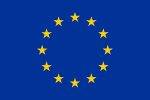Strategy Development
In this service category, DIHs can provide support to the public and industrial sector with regards to market awareness and future directions of the market. Moreover, this service category also includes services to have one-to-one follow-up with companies and public organizations in order to identify relevant I&M robotics applications areas and possible technological solutions for these application areas. These are all important aspects to increase the uptake of I&M robotics. The services in the strategy development category are often provided through the organization of workshops which gather experts of the field as well as one-to-one follow-up with companies.
Generally, workshops attract technical experts who work with technology development for the sector and market experts who are aware of the current and future challenges of the field. The workshops are a good opportunity to share knowledge about the future of the market (1/5/10 years horizon) and about technical solutions for the current and the future challenges, as well as to share ideas and plans for further automation.
Furthermore, these events facilitate – similarly to events within community building – the meeting of technical and market experts which may not easily meet otherwise. Therefore, a good practice may be to carefully select the right people to be invited to the workshop and facilitate meetings among relevant parties by means of brokerage sessions in order to encourage and facilitate the parties to start collaborations and joint projects. These workshops may be organized at a local, national or international level and may be funded by participants fees.

A combination of services within strategy development to increase uptake of I&M robotics.
In addition to workshops, one-to-one dialog between DIH representatives (e.g., from competence centres and/or technology suppliers) and relevant companies (both within and outside the DIH) is important to identify opportunities in I&M robotics for a specific company and to determine how this potential can be realized commercially. In practice, the DIH can support the company with services aimed at different stages of the development cycle, for instance as illustrated in the figure above:
This service is typically delivered by senior experts. It considers potential applications areas of I&M robotics within end user companies and public organizations and identifies in which of these areas the companies/organizations could potentially benefit most from the introduction, improvement or redeployment of I&M robotics. This service is typically performed by visiting the company and going through their relevant operations with them. This service provides an initial overview of potential application areas of I&M robotics, and its output can be used as input to further investigations to determine which applications areas that could benefit the company/organization the most as well as to determine the feasibility of implementing cost-efficient I&M robotics that are economically sustainable for the company/organization.
This service is delivered by senior experts, preferably with a wide background in business modelling and fundraising, and with an overall vision of all the market domains addressed by the company using this service. This mentor will support in business modelling, fund raising and corporate engagement by cooperating closely with the user of the service. Moreover, application mentors can also help to determine whether there is an actual business need/case for the I&M robotics solution(s) considered.
A technology mentor evaluates the feasibility of solving potential application areas of I&M robotics within a company with current technology and she or he suggest potentially relevant technologies. Moreover, if such technology is not readily available, then the technology mentor can provide insights into the efforts needed to develop such technology. Technology matchers need a broad overview of I&M robotics technologies and solutions in practical use, including different options and their limitations. Technology mentoring can be carried out after the diagnostics service to provide more details into potentially relevant technology, or it can be provided as a stand-alone service if, e.g., the user of the service has done work on diagnostics by itself or gotten it from others. The technology mentor can in collaboration with the application mentor produce a roadmap for the user’s automation path, showing priority paths and dependencies.
Depending on factors such as how in-depth the work with the above three services should be and the skills of the people involved in providing the service, one or several people can be involved in providing the service.
Technology watch services can also be included within the strategy development category since a thorough understanding of status and trends within relevant technologies can be crucial for a company or public organization to set its future direction. Technology watch may include providing an overview of the status, trends and key actors within a specific or more general area of technology or application. The outcome of a technology watch service can be a report and/or a presentation. It is recommended to keep a close dialog between the persons providing the service and the company purchasing the service to ensure that the technology watch is relevant for the company. A technology watch service is typically provided by a competence centre. From our data, it is typically large companies that uses this service.


